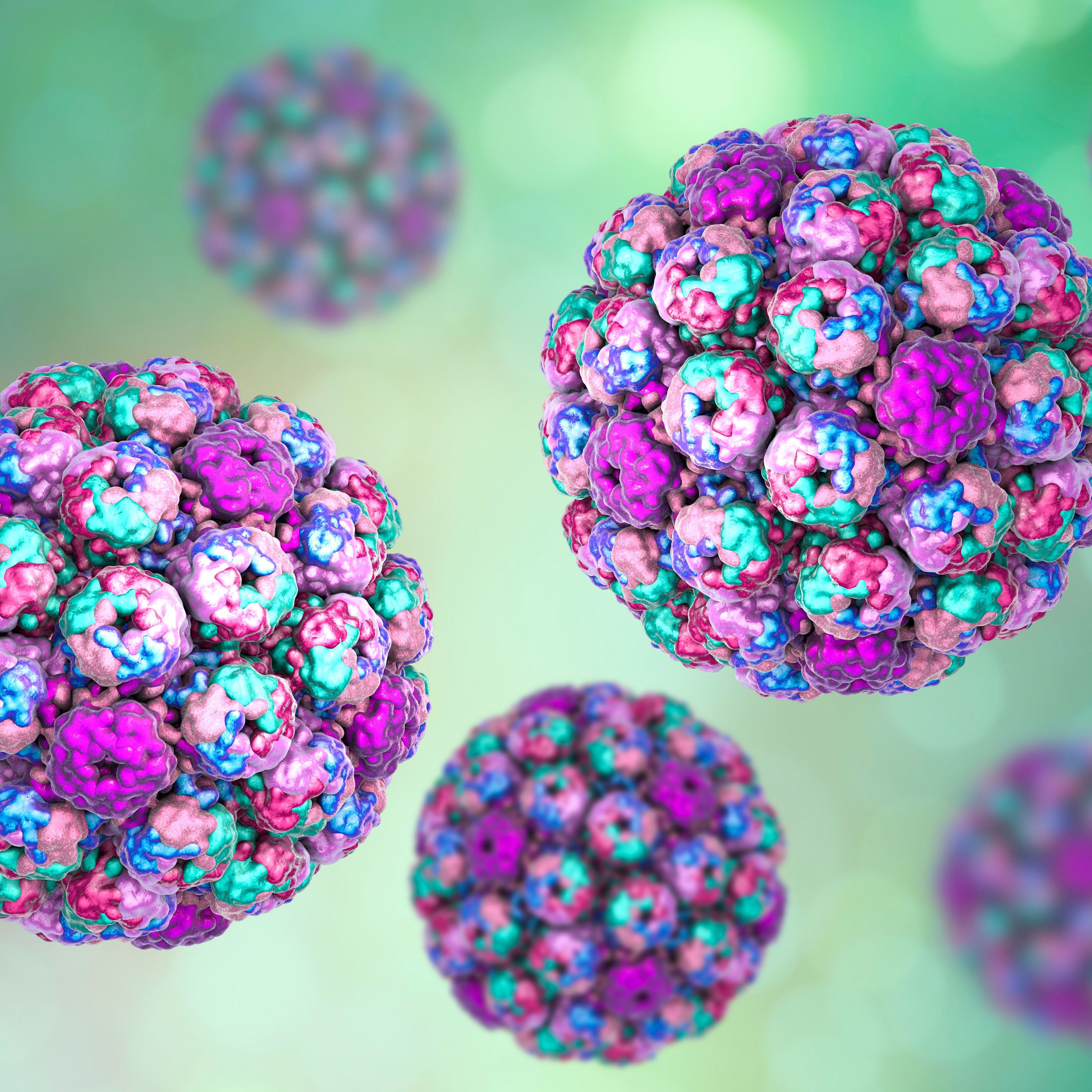
What are polyomaviruses?
Polyomaviruses are Polyomaviridae, which are a group of viral envelopes consisting of loose DNA viruses. They have a genetic material consisting of a capsid of more than 70 capsomers. The genus of viruses includes, for example, the human polyomavirus as well as the BK and JC viruses. The BK virus in particular has adapted very strongly to humans as hosts over the course of time.
The polyomaviruses play a major role mainly in vertebrates. They infect organisms and cause various persistent infections.
The first polyomavirus to be documented was the murine polyomavirus . This virus causes various types of tumours in newborn mice. Notably, murine polyomavirus belongs to the Polyomaviridae, which includes different subspecies. These species include the:
- Monkey polyomavirus,
- Baboon polyomavirus 2,
- Human polyomavirus,
- Bovine polyomavirus.
Furthermore,
chimpanzee polyomavirus and Merkel cell polyomavirus have been classified as
additional species of the Polyomaviridae.
What are the special properties of polyomaviruses?
One of the most important properties is the environmental stability of the capsids. Because of this, polyomaviruses cannot be inactivated with the help of detergents or diethylether. Therefore, washing hands with soap is not an effective and preventive measure against these viruses. Even temperatures of up to 50 degrees cannot harm polyomaviruses. They are considered to be extremely heat-resistant. Just the combination of magnesium chloride with heat makes the capsid of the viruses unstable.
Where do polyomaviruses occur?
All polyomaviruses that have already been researched are spread all over the world and show an infestation that increases with age. In adults, a seroprevalence of 30 to 90 % can be assumed. This means that the first infection with polyomaviruses occurred in childhood. In most cases, the course of the disease is asymptomatic. This also explains why is still present in most cases. This also explains why it is still not 100% clear how the viruses are transmitted. If diseases triggered by polyomaviruses occur, they are most often found in people with immunosuppression. This means that people with HIV, organ transplants or also leukaemia patients are most at risk
How are polyomaviruses transmitted?
Polyomaviruses are passed on through smear infection, with urine, contaminated water or through droplet infection. It persists in the central nervous system and in the kidney. However, transmission can only take place when the virus is excreted, i.e. when the immune system is weakened.
What diseases are triggered by polyomaviruses?
Polyomaviruses trigger various diseases. For example, the French moult. People who are immunosuppressed have the risk that an infection with the polyomavirus will favour a transplant loss.
What are the symptoms of polyomavirus?
The BK virus is often associated with fever, respiratory infections and cystitis in children. If patients have received a bone marrow transplant, haemorrhagic cystitis is frequently encountered . In people with kidney transplants the polyomaviruses can cause ureteral stenosis.
Under circumstances, AIDS patients can develop meningoencephalitis due to infection with polyomaviruses. The JC viruses and BK viruses persist in kidney tissue.
How are polyomaviruses diagnosed?
The PCR test is considered the absolute gold standard. As a rule, PCRs in the blood of healthy people are negative. Small numbers of genomes can often be detected in the urine. A positive detection in the urine is not conclusive enough to make a definite diagnosis. . Only the positive PCR test is conclusive enough to be able to make a definite diagnosis.
How are polyomaviruses treated?
There is currently no causal therapy against polyomaviruses, which means that treatment is kept purely symptomatic:
- Paracetamol or ibuprofen can be taken for high fever and pain.
- Calf compresses can also lower the temperature.
- Sufficient fluid intake is essential to prevent dehydration.
- Rest and bed rest is advisable.
In addition, the therapy can be supplemented with cidofovir. Ciprofloxacone is often given as a viral replication inhibitor.
What is the prognosis for polyomaviruses?
An infection with the viruses rarely takes a severe or even fatal course. The viruses have adapted to the human host and, due to their own disadvantages, do not want to harm it in any way. However, humans themselves have also adapted well to the virus over the course of several generations. The current rate of contamination with the BK virus is estimated at about 90 %.
For immunosuppressed persons, however, the JC virus can have serious consequences. If a progressive multifocal leukoencephalopathy occurs, the course of the disease is very often fatal. Many different tumour diseases are associated with the Simian virus-40. The infestation of the population with the JC viruses is significantly lower than that of the BK viruses. This is because the adaptation of the virus to humans of this species of polyomavirus is much less advanced.
How can polyomaviruses be prevented?
So far, there is no vaccination against polyomavirus. Essential measures one should take to protect oneself from polyomaviruses is hand disinfection. In addition, one should not have too close contact with infected persons.
Is there an obligation to report polyomaviruses?
According to the Infection Protection Act, the suspicion of an infection with polyomaviruses as well as the disease itself and death must be reported. These reports are essential in order to be able to take early measures against the spread of the viruses.
